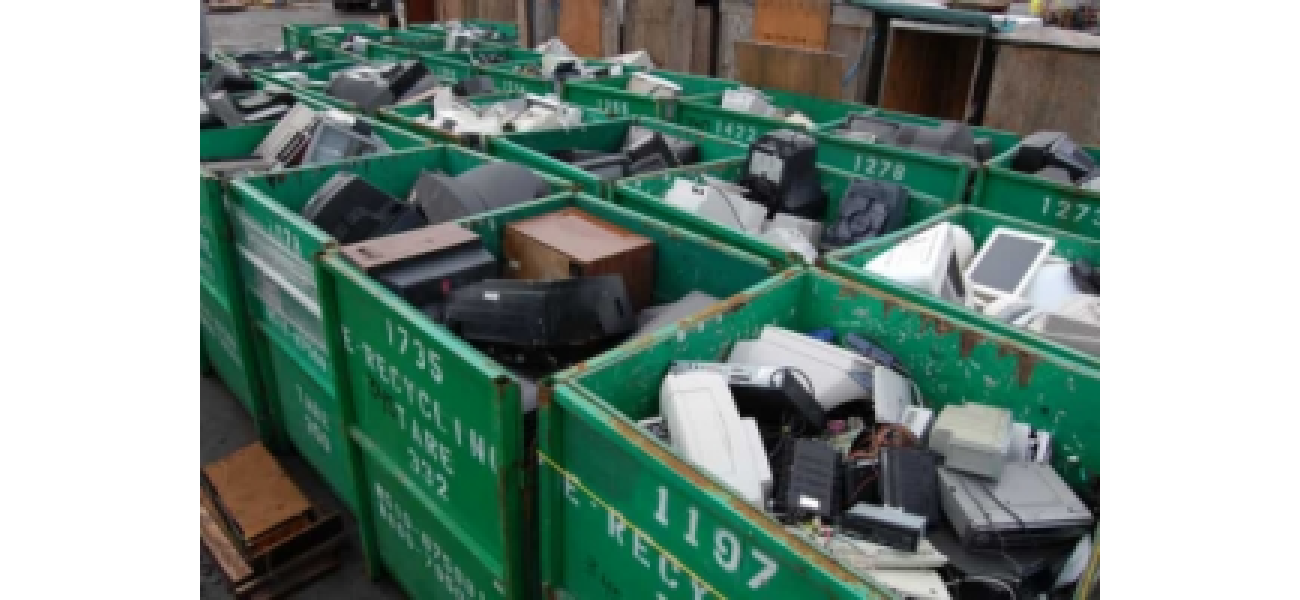India's government has authorized 1,500 crore rupees in incentives for recycling units of critical minerals.
Cabinet approves Rs 1,500 crore scheme to develop recycling capacity for critical minerals as part of National Critical Mineral Mission.
September 3rd 2025.

New Delhi: On Wednesday, the Union Cabinet, led by Prime Minister Narendra Modi, approved a groundbreaking scheme worth Rs 1,500 crore. This scheme aims to boost the recycling capacity in India, specifically for the separation and production of critical minerals from secondary sources.
This initiative is a crucial part of the National Critical Mineral Mission, which has the primary goal of strengthening the domestic capacity and supply chain resilience for critical minerals. The critical mineral value chain involves various processes such as exploration, auction, mine operation, and acquisition of foreign assets. However, it takes time before these minerals can be supplied to the Indian industry. In order to ensure supply chain sustainability in the near future, the government has identified recycling of secondary sources as a prudent solution.
The scheme will be implemented for a period of six years, from FY 2025-26 to FY 2030-31. It will focus on e-waste, Lithium Ion Battery scrap, and other types of scrap such as catalytic converters from end-of-life vehicles. Both large and established recyclers, as well as small and new ones, are expected to benefit from this scheme. In fact, one-third of the total scheme budget has been set aside for small recyclers.
The scheme will provide incentives for investments in new units, as well as expansion, modernization, and diversification of existing units. It will primarily focus on the recycling value chain, which involves the extraction of critical minerals, rather than the value chain involved in black mass production.
The incentives under this scheme will include a 20% Capex subsidy on plant and machinery, equipment, and associated utilities for starting production within a specified timeframe. Beyond this timeframe, the subsidy will be reduced. Additionally, there will be an Opex subsidy, which will serve as an incentive for incremental sales over the base year. This will consist of 40% of eligible Opex subsidy in the 2nd year and the remaining 60% in the 5th year, starting from FY 2026-27 to FY 2030-31.
To ensure that a larger number of beneficiaries can avail of the scheme, there will be a limit on the total incentive per entity. For large entities, the cap will be set at Rs 50 crore, while for small entities it will be Rs 25 crore. Within this limit, there will also be a maximum Opex subsidy of Rs 10 crore for large entities and Rs 5 crore for small entities.
The scheme is expected to have significant outcomes, including the development of 270 kilo ton of annual recycling capacity, resulting in around 40 kilo ton of annual critical mineral production. This is estimated to bring in an investment of approximately Rs 8,000 crore and create around 70,000 direct and indirect jobs. Before finalizing the scheme, the government conducted several rounds of consultations with industry experts and other stakeholders through dedicated meetings and seminars.
Overall, this scheme is a major step towards achieving self-sufficiency in critical minerals and strengthening the recycling capacity in India. It is a testament to the government's commitment towards promoting sustainable development and creating job opportunities in the country.
This initiative is a crucial part of the National Critical Mineral Mission, which has the primary goal of strengthening the domestic capacity and supply chain resilience for critical minerals. The critical mineral value chain involves various processes such as exploration, auction, mine operation, and acquisition of foreign assets. However, it takes time before these minerals can be supplied to the Indian industry. In order to ensure supply chain sustainability in the near future, the government has identified recycling of secondary sources as a prudent solution.
The scheme will be implemented for a period of six years, from FY 2025-26 to FY 2030-31. It will focus on e-waste, Lithium Ion Battery scrap, and other types of scrap such as catalytic converters from end-of-life vehicles. Both large and established recyclers, as well as small and new ones, are expected to benefit from this scheme. In fact, one-third of the total scheme budget has been set aside for small recyclers.
The scheme will provide incentives for investments in new units, as well as expansion, modernization, and diversification of existing units. It will primarily focus on the recycling value chain, which involves the extraction of critical minerals, rather than the value chain involved in black mass production.
The incentives under this scheme will include a 20% Capex subsidy on plant and machinery, equipment, and associated utilities for starting production within a specified timeframe. Beyond this timeframe, the subsidy will be reduced. Additionally, there will be an Opex subsidy, which will serve as an incentive for incremental sales over the base year. This will consist of 40% of eligible Opex subsidy in the 2nd year and the remaining 60% in the 5th year, starting from FY 2026-27 to FY 2030-31.
To ensure that a larger number of beneficiaries can avail of the scheme, there will be a limit on the total incentive per entity. For large entities, the cap will be set at Rs 50 crore, while for small entities it will be Rs 25 crore. Within this limit, there will also be a maximum Opex subsidy of Rs 10 crore for large entities and Rs 5 crore for small entities.
The scheme is expected to have significant outcomes, including the development of 270 kilo ton of annual recycling capacity, resulting in around 40 kilo ton of annual critical mineral production. This is estimated to bring in an investment of approximately Rs 8,000 crore and create around 70,000 direct and indirect jobs. Before finalizing the scheme, the government conducted several rounds of consultations with industry experts and other stakeholders through dedicated meetings and seminars.
Overall, this scheme is a major step towards achieving self-sufficiency in critical minerals and strengthening the recycling capacity in India. It is a testament to the government's commitment towards promoting sustainable development and creating job opportunities in the country.
[This article has been trending online recently and has been generated with AI. Your feed is customized.]
[Generative AI is experimental.]
0
0
Submit Comment





